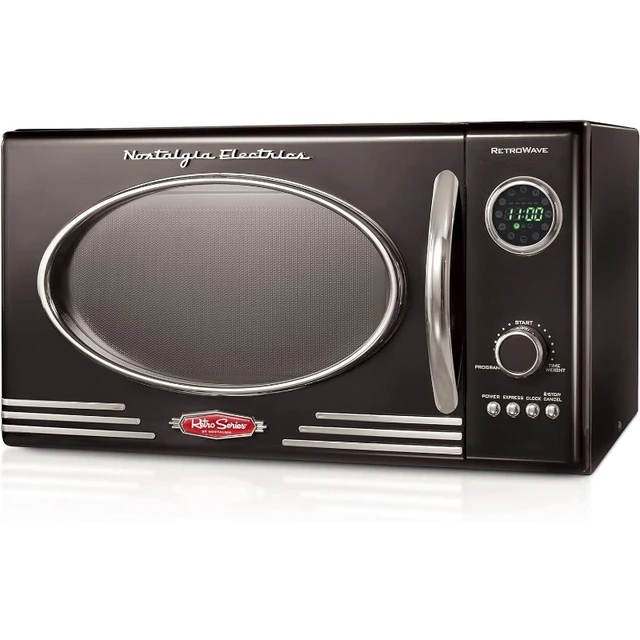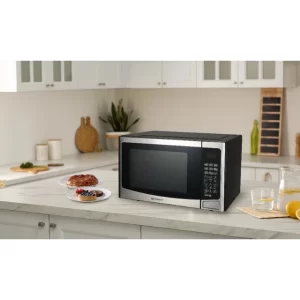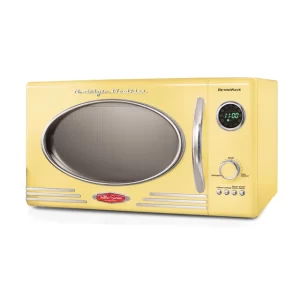Which is better convection or inverter microwave?
Introduction:
When it comes to choosing a microwave oven, two popular options are convection and inverter microwaves. Both offer unique features and benefits that cater to different cooking needs and preferences. In this article, we will compare convection and inverter microwaves, exploring their functionalities, advantages, limitations, and key considerations to help you determine which option may be better suited for your cooking requirements.

Which is better convection or inverter microwave?
Understanding Convection Microwaves:
Convection microwaves combine the capabilities of traditional microwave cooking with convection heating.
In addition to microwaving, they incorporate a built-in fan and heating element to circulate hot air for even and efficient cooking.
Convection microwaves can bake, roast, grill, and brown food, providing versatility in cooking options.
Understanding Inverter Microwaves:
Inverter microwaves utilize advanced technology that provides consistent power levels throughout the cooking process.
Unlike traditional microwaves that use pulses of full power followed by pauses, inverter microwaves deliver a steady flow of low power.
This allows for more precise control over cooking and prevents uneven heating or overcooking of food.
Cooking Capabilities:
a. Convection Microwaves:
Convection microwaves provide a wide range of cooking functions, including microwaving, baking, grilling, roasting, and toasting.
The built-in fan and heating element enable the circulation of hot air, resulting in faster and more even cooking.
Convection microwaves are suitable for a variety of dishes, such as baking bread, roasting chicken, or grilling vegetables.
b. Inverter Microwaves:
Inverter microwaves excel in providing precise and consistent cooking results.
The steady flow of low power allows for more controlled cooking, reducing the risk of overcooking or undercooking.
Inverter technology is particularly beneficial for delicate foods, such as fish or custards, where precise temperature control is essential.
Speed and Efficiency:
a. Convection Microwaves:
Convection microwaves offer faster cooking times compared to traditional microwaves.
The combination of microwave and convection heating allows for quicker and more efficient cooking.
The hot air circulation helps to evenly distribute heat, resulting in reduced cooking times for various dishes.
b. Inverter Microwaves:
Inverter microwaves also offer efficient cooking capabilities.
The consistent power output throughout the cooking process ensures that food is cooked more evenly and at a faster pace.
The precise control over the power levels allows for better energy utilization and reduced cooking times.
Versatility:
a. Convection Microwaves:
Convection microwaves provide versatility in cooking a wide range of dishes.
They are suitable for baking cakes, cookies, and muffins, as well as roasting meats and grilling vegetables.
The availability of various cooking modes and temperature settings enhances the versatility of convection microwaves.
b. Inverter Microwaves:
Inverter microwaves excel in versatility when it comes to delicate cooking.
The ability to control power levels precisely makes them suitable for defrosting, reheating, and cooking a variety of foods without sacrificing texture or flavor.
Cooking Performance:
a. Convection Microwaves:
Convection microwaves offer excellent cooking performance, particularly in terms of browning and crisping.
The hot air circulation ensures that food is cooked evenly, resulting in golden-brown crusts and crispy textures.
Convection microwaves can replicate the results of traditional oven cooking while saving time and energy.
b. Inverter Microwaves:
Inverter microwaves prioritize consistent and precise cooking results.
They excel in maintaining the texture, moisture, and flavors of food without the risk of overcooking or drying out.
Inverter technology ensures that delicate foods retain their integrity, making it ideal for tasks involving precise temperature control.
Price:
The cost of convection and inverter microwaves varies depending on the brand, model, and additional features.
In general, convection microwaves tend to be more expensive than traditional microwaves due to the added convection heating functionality.
Inverter microwaves, on the other hand, may have a higher price point due to the advanced technology and precise cooking capabilities they offer.
Size and Space Considerations:
When choosing between a convection and inverter microwave, consider the available space in your kitchen.
Convection microwaves are typically larger and may require additional counter space or a dedicated installation location.
Inverter microwaves are available in various sizes, including compact options, making them suitable for kitchens with limited space.
User-Friendliness:
User-friendliness is an important consideration when selecting a microwave.
Both convection and inverter microwaves can offer user-friendly features, such as pre-programmed cooking settings, sensor cooking, and easy-to-use control panels.
Consider the specific features and functions that align with your cooking style and preferences.
Conclusion:
Choosing between a convection or inverter microwave depends on your cooking needs, preferences, and budget. Convection microwaves provide versatility and efficiency, offering baking, grilling, and roasting capabilities. They are ideal for those who want an all-in-one solution for various cooking tasks. Inverter microwaves offer precise and consistent cooking results, making them suitable for delicate foods and achieving desired textures. They excel in preserving moisture and flavors without the risk of overcooking. Consider the size of your kitchen, available space, and budget when making your decision. Ultimately, the choice between convection and inverter microwaves comes down to your specific cooking requirements and desired cooking performance.

